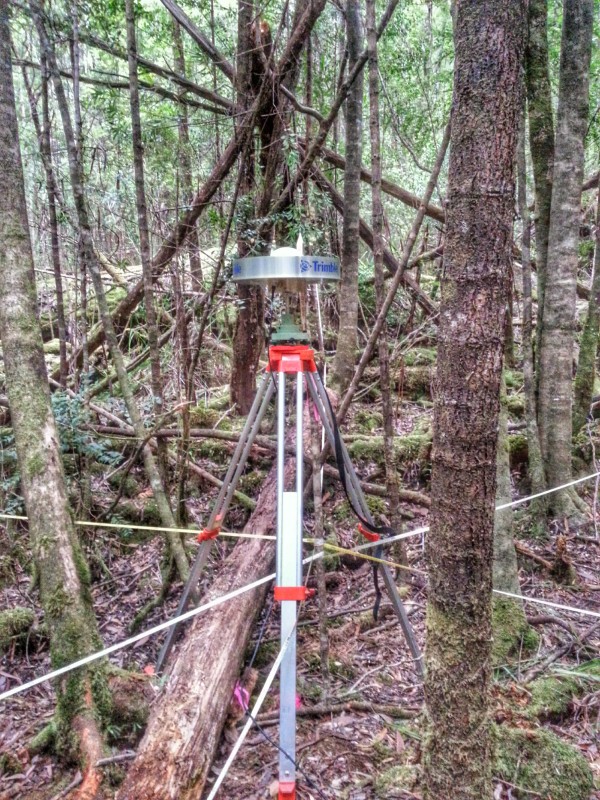After a hearty breakfast (thanks to Iain) we got started back at the flux site. Due to the density we're doing seven TLS scans per site in a star pattern to match the transects.

We've also deployed 18 reflectors across the site to help with registration of the scans. These are very bright targets that have a known size and are visible to the scanner from far away. The display mirrored on my phone of one of the targets looks like this:

Today we also saw the tree climbers arrive on site. They'll be rigging ropes and preparing to collect canopy leaf samples from selected trees which we'll scan, weigh, collect reflectance and transmittance and measure chemistry. I'll get some details on this later in the week.

All the sites are geolocated using RTK and post processed DGPS. Here's the Trimble set up to log overnight. We'll get cm accuracy even with the dense canopy.

Finally we moved onto the log decay site and laid out the tapes in preparation for sampling tomorrow. This site is pretty interesting in that it contains a mix of old growth and more recent regrowth and a huge number of fallen trees. It's going to take a while tomorrow...

As night fell, instruments were downloaded and charged, weather was discusssed (looks like the hyperspectral flight will be on Thursday), planning for day three was discussed and the leaf sampling team got to work.

